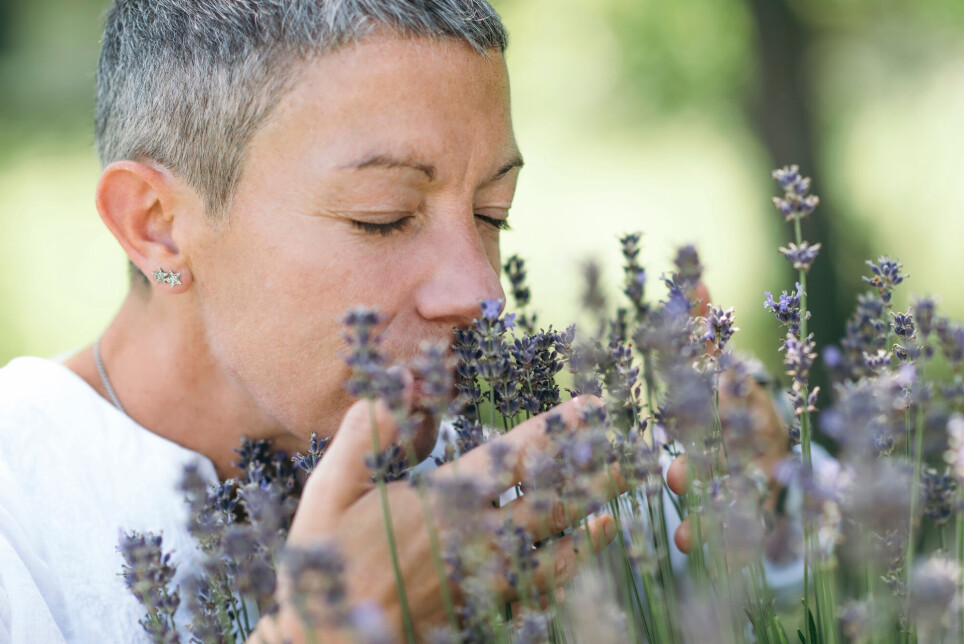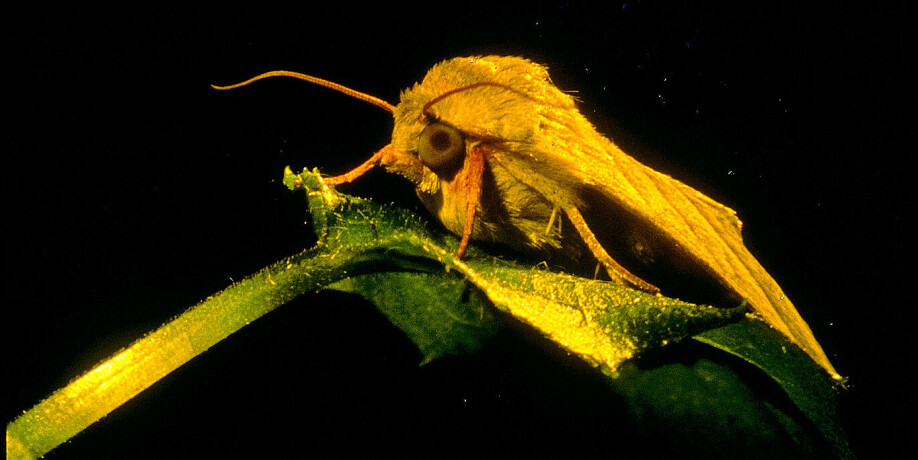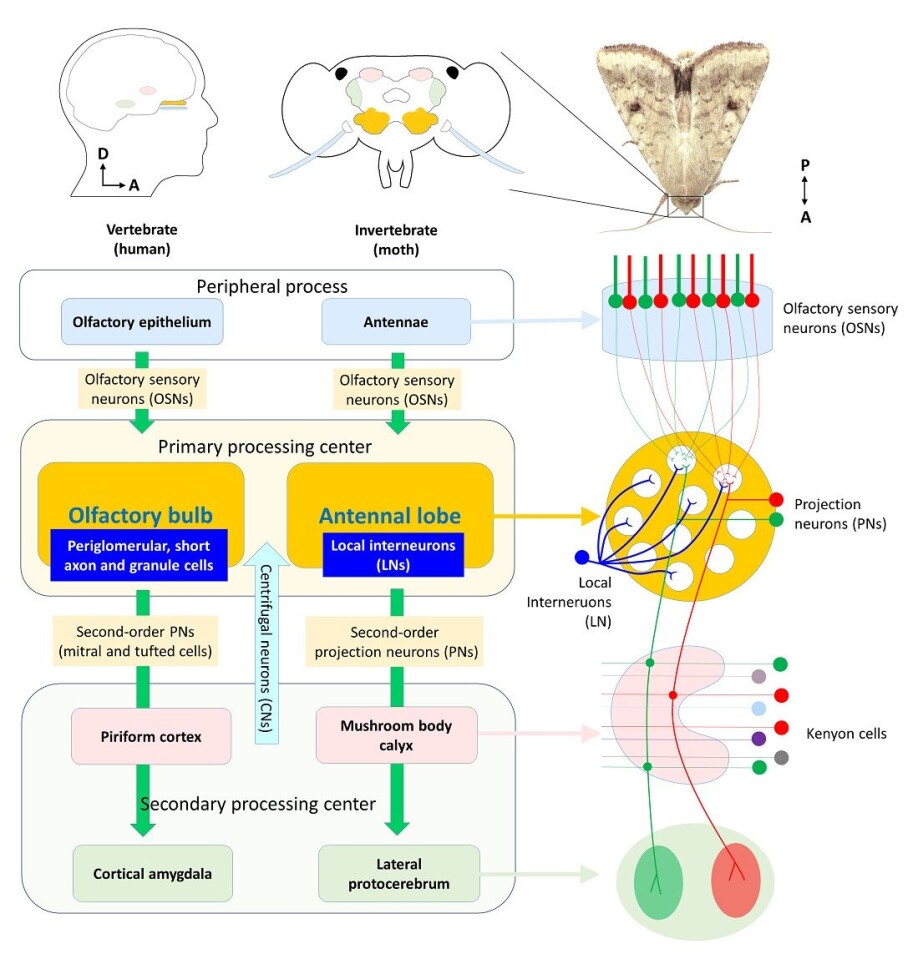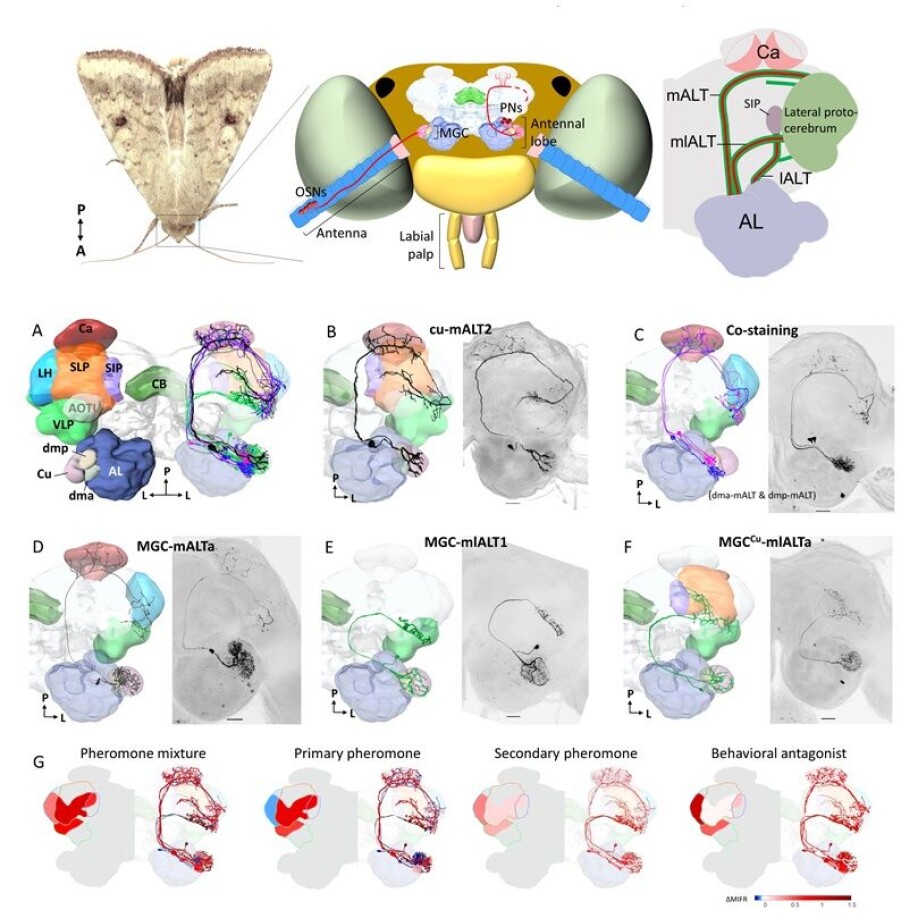THIS ARTICLE/PRESS RELEASE IS PAID FOR AND PRESENTED BY NTNU Norwegian University of Science and Technology - read more

Your sense of smell resembles that of insects
Scientists find remarkable similarities in the olfactory pathways of such diverse creatures as humans and insects.
Professor Bente Gunnveig Berg and her colleagues are working to unravel some of the unanswered questions about how the brain processes olfactory information. They do this in the Chemosensory Laboratory at NTNU’s Department of Psychology.
“By using the brain of a cotton bollworm as a model, we can perform experiments where we describe anatomy and physiology at the single cell level,” Berg explains.
“The branching patterns and coding mechanisms we detect in the small model brain seem to be relevant not only for insects, but also for mammals – which include people.
Humans often lack linguistic concepts for the experience of smell, but tend to classify smells as pleasant or unpleasant.
In a publication in the scientific journal eLife from earlier this year, researchers at NTNU describe how scent signals that either attractants or repellents are interpreted in different areas of the brain.

Sense of smell is the oldest sense
“We find striking similarities in the structure and function of the olfactory system across different organisms,” says Xi Chu, a researcher in NTNU’s Department of Psychology and senior author of the new publication.
The similarities are probably related to the fact that the olfactory system is evolutionarily the oldest of all sensory systems.
In humans, we observe this by how odour information is processed to a great extent in developmentally old brain areas. These include the hippocampus and amygdala, which are involved in establishing memory and processing emotions.
“It’s worth noting that the primary olfactory centre in the mammalian brain is located only one synapse away from the outside world,” says Dr. Chu.
“This means that the incoming information goes directly into the primary olfactory cortex, unlike all other sensory signals, which travel through a different brain structure before dispersing to their respective cortical areas.

Striking similarities
“We’ve studied second-order olfactory neurons in male cotton bollworms,” says Chu.
The males carry signals from the primary olfactory centre to other areas of the brain, where the signals are further interpreted to provide the correct responses.
“They’re strangely similar to neurons, called mitral cells, in humans and other mammals,” says Chu.
Here’s the nitty-gritty of the olfactory process for the non-specialists among us:
When we smell something, it’s because certain molecules that are dispersed in the air first activate sensory neurons in the olfactory epithelium. This is an area in the nose that captures odour molecules and carries them further into the brain’s primary olfactory centre.
Here, the sensory terminals form a kind of map, so neurons that have the same type of olfactory receptor accumulate within spherical structures called glomeruli.
Insects have a similar system of sensory olfactory neurons that form glomeruli in their antennal lobes. The similarity also applies to second-order olfactory neurons that send signals from the primary olfactory centre to higher-order areas.
The various odours are represented in the form of a collection of non-overlapping glomeruli in the primary olfactory centre. But they are arranged in a quite different way in the subsequent second-order centres.
In both insects and humans, the terminals of second-order olfactory neurons cover relatively large areas that partly overlap.
“We also found a pattern here using high-resolution data from electrophysiological registrations or staining of individual neurons in the insect brain,” Chu says.
Attractive and aversive signals were mostly separated into different areas.

Female scent associated with both attraction and rejection
In cotton bollworms, females can produce and secrete odourants called pheromones. These pheromones consist of various components and send signals to other night swarmers.
The research group explains how inputs from three pheromone constituents produced by the females are treated in the males’ higher olfactory centres.
The male cotton bollworm is well suited as a model to explore how chemical signals are represented in the brain. We know the relevant scent signals for reproductive behaviour, and the relatively clear system consists of only a few stimuli. Some of these initiate attraction, while others initiate aversion.
Long-term work
“This article is the result of prolonged work and use of various experimental methods,” says Elena Ian, another researcher in the lab.
The group has put a lot of effort into visualizing the special projection pattern.
First author Jonas Hansen Kymre recently defended his dissertation “Connection patterns in the central olfactory pathway of the male moth.” His eLife article is included as one of three articles.
Some people may be surprised that researchers study insect brains in the Department of Psychology.
“It’s important to explore the physiology and anatomy of the nervous system itself for this subject area as well,” Kymre says.
“Gaining insight into some of the advanced neural networks that hide in a small insect brain could contribute to reflection – both in terms of where we come from and our place among the diversity of species,” says Professor Berg.
Reference:
Jonas Hansen Kymre et.al.: Distinct protocerebral neuropils associated with attractive and aversive female-produced odorants in the male moth brain. eLife , 2021.
See more content from NTNU:
-
Social media is connected to cyberbullying – but not how we thought
-
Forskere ved NTNU får nesten 24 millioner av EU for å lage nye strømomformere
-
This helps the youngest children enjoy school more
-
Can we tap the ocean’s power to capture carbon?
-
Researchers have uncovered major problems in Norway's salmon industry
-
Why ChatGPT is bad at imitating people





































